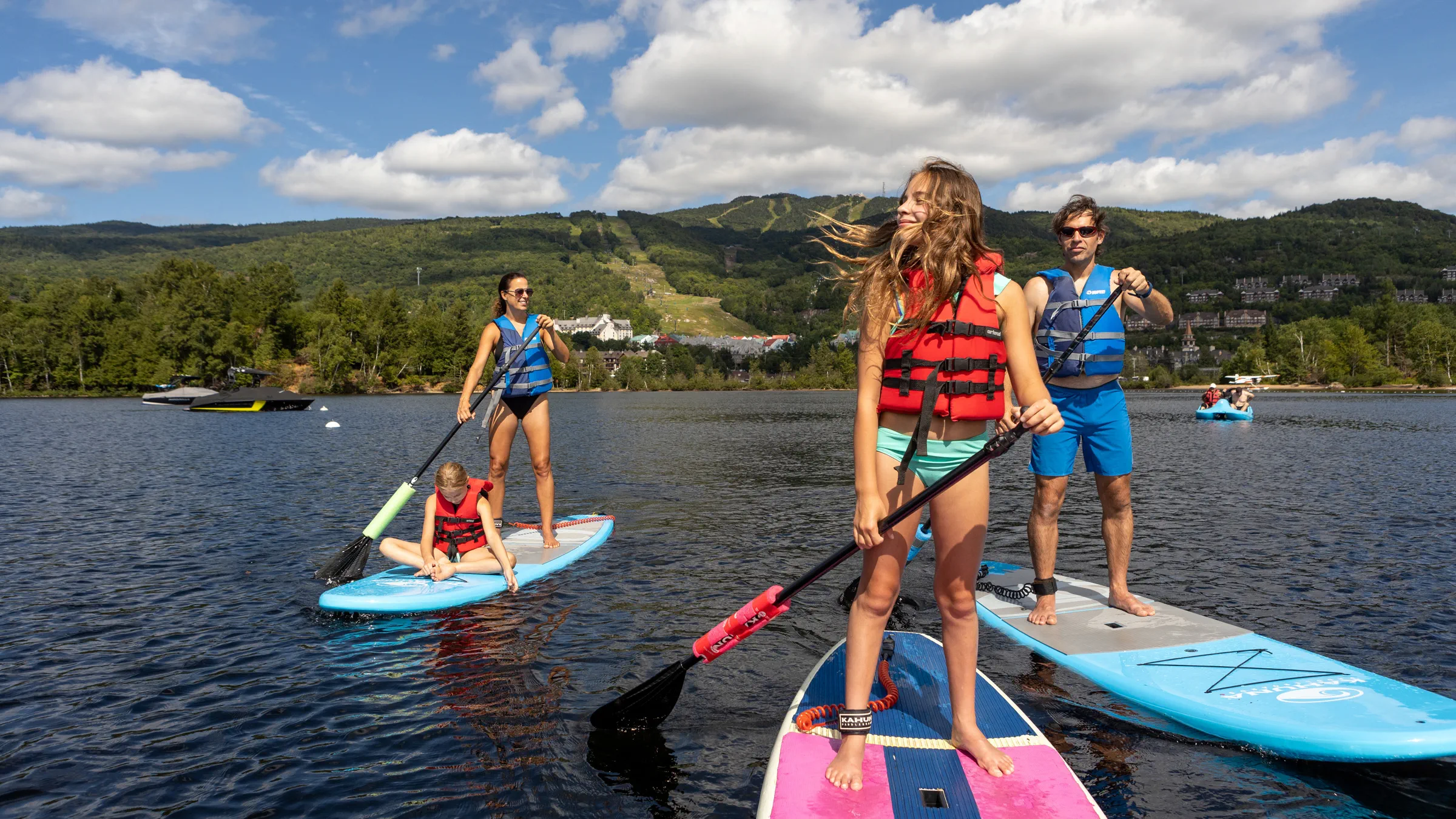First on-snow experience
Feeling confident for your first run
Close Video
Tips for learning to glide successfully

2. Dress properly
The best way to dress for winter is to wear layers. Select clothing adapted to the weather for optimal comfort. It will give you flexibility to add or remove layers accordingly.
A. Neck warmer
B. Ski goggles
C. Gloves and mittens
D. Socks
E. Helmet
F. Ski jacket
G. Ski pants
A. Neck warmer
B. Ski goggles
C. Gloves and mittens
D. Socks
E. Helmet
F. Ski jacket
G. Ski pants
Clothing
Wicking layer
This is the layer worn next to your skin, usually consisting of long underwear. Look for thermal underwear made of a synthetic – usually polyester – fiber that has "wicking" power.
Insulating layer
This middle layer includes sweaters, sweatshirts, vests and pullovers. The purpose of this layer is to keep heat in and cold out, which is accomplished by trapping air between the fibers. Popular insulation materials include fleece and wool.
Protection layer
The exterior layer, generally a shell and pants, serves as your guard against the elements of winter. It should repel water from snow, sleet or rain and block the wind, while also letting perspiration evaporate. Don't wear jeans or street pants. Denim is not waterproof, so water will soak through and you'll end up cold, wet and miserable.
Headwear
Up to 60% of your body's heat can escape from an uncovered head, so wearing a hat or headband is essential when it's cold.
Neck gaiter
A fleece neck gaiter or face mask is a must on cold days.
Gloves and mittens
Look for gloves and mittens that use waterproof, breathable fabrics. Mittens, in general, are warmer than gloves, but offer you less dexterity. Consider the type of activity you'll be doing. Don't buy gloves or mittens that are too tight. There should be a little air space at the tips of your fingers, which acts as additional insulation.
Socks
One pair of light-weight or medium-weight socks works best for skiing, snowboarding or snowshoeing. Socks are made from a variety of materials, including polyester, silk, wool and nylon. Some socks have wicking properties similar to long underwear, meaning your feet will stay dry and comfortable. It is recommended to put a dry pair of socks when you put your ski or snowboard boots on.
This is the layer worn next to your skin, usually consisting of long underwear. Look for thermal underwear made of a synthetic – usually polyester – fiber that has "wicking" power.
Insulating layer
This middle layer includes sweaters, sweatshirts, vests and pullovers. The purpose of this layer is to keep heat in and cold out, which is accomplished by trapping air between the fibers. Popular insulation materials include fleece and wool.
Protection layer
The exterior layer, generally a shell and pants, serves as your guard against the elements of winter. It should repel water from snow, sleet or rain and block the wind, while also letting perspiration evaporate. Don't wear jeans or street pants. Denim is not waterproof, so water will soak through and you'll end up cold, wet and miserable.
Headwear
Up to 60% of your body's heat can escape from an uncovered head, so wearing a hat or headband is essential when it's cold.
Neck gaiter
A fleece neck gaiter or face mask is a must on cold days.
Gloves and mittens
Look for gloves and mittens that use waterproof, breathable fabrics. Mittens, in general, are warmer than gloves, but offer you less dexterity. Consider the type of activity you'll be doing. Don't buy gloves or mittens that are too tight. There should be a little air space at the tips of your fingers, which acts as additional insulation.
Socks
One pair of light-weight or medium-weight socks works best for skiing, snowboarding or snowshoeing. Socks are made from a variety of materials, including polyester, silk, wool and nylon. Some socks have wicking properties similar to long underwear, meaning your feet will stay dry and comfortable. It is recommended to put a dry pair of socks when you put your ski or snowboard boots on.
Accessories
Helmet
A helmet is mandatory for children under 12 years old enrolled in a Snow School lesson. Station Mont Tremblant recommends wearing helmets for skiing and riding.
Goggles
Snow, or any other reflective surface, makes ultraviolet (UV) rays stronger, while increased altitude also magnifies the danger. Make sure your goggles fit snugly around your head or helmet and rest gently on the bridge of your nose.
A helmet is mandatory for children under 12 years old enrolled in a Snow School lesson. Station Mont Tremblant recommends wearing helmets for skiing and riding.
Goggles
Snow, or any other reflective surface, makes ultraviolet (UV) rays stronger, while increased altitude also magnifies the danger. Make sure your goggles fit snugly around your head or helmet and rest gently on the bridge of your nose.


First on-snow experience?









